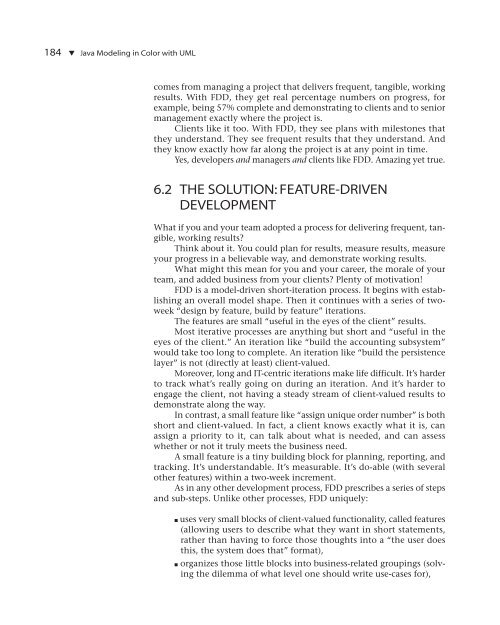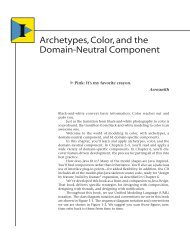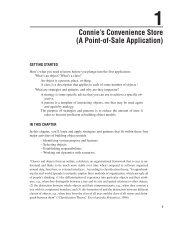Feature-Driven Development - About Peter Coad
Feature-Driven Development - About Peter Coad
Feature-Driven Development - About Peter Coad
You also want an ePaper? Increase the reach of your titles
YUMPU automatically turns print PDFs into web optimized ePapers that Google loves.
184 ▼ Java Modeling in Color with UML<br />
comes from managing a project that delivers frequent, tangible, working<br />
results. With FDD, they get real percentage numbers on progress, for<br />
example, being 57% complete and demonstrating to clients and to senior<br />
management exactly where the project is.<br />
Clients like it too. With FDD, they see plans with milestones that<br />
they understand. They see frequent results that they understand. And<br />
they know exactly how far along the project is at any point in time.<br />
Yes, developers and managers and clients like FDD. Amazing yet true.<br />
6.2 THE SOLUTION: FEATURE-DRIVEN<br />
DEVELOPMENT<br />
What if you and your team adopted a process for delivering frequent, tangible,<br />
working results?<br />
Think about it. You could plan for results, measure results, measure<br />
your progress in a believable way, and demonstrate working results.<br />
What might this mean for you and your career, the morale of your<br />
team, and added business from your clients? Plenty of motivation!<br />
FDD is a model-driven short-iteration process. It begins with establishing<br />
an overall model shape. Then it continues with a series of twoweek<br />
“design by feature, build by feature” iterations.<br />
The features are small “useful in the eyes of the client” results.<br />
Most iterative processes are anything but short and “useful in the<br />
eyes of the client.” An iteration like “build the accounting subsystem”<br />
would take too long to complete. An iteration like “build the persistence<br />
layer” is not (directly at least) client-valued.<br />
Moreover, long and IT-centric iterations make life difficult. It’s harder<br />
to track what’s really going on during an iteration. And it’s harder to<br />
engage the client, not having a steady stream of client-valued results to<br />
demonstrate along the way.<br />
In contrast, a small feature like “assign unique order number” is both<br />
short and client-valued. In fact, a client knows exactly what it is, can<br />
assign a priority to it, can talk about what is needed, and can assess<br />
whether or not it truly meets the business need.<br />
A small feature is a tiny building block for planning, reporting, and<br />
tracking. It’s understandable. It’s measurable. It’s do-able (with several<br />
other features) within a two-week increment.<br />
As in any other development process, FDD prescribes a series of steps<br />
and sub-steps. Unlike other processes, FDD uniquely:<br />
■ uses very small blocks of client-valued functionality, called features<br />
(allowing users to describe what they want in short statements,<br />
rather than having to force those thoughts into a “the user does<br />
this, the system does that” format),<br />
■ organizes those little blocks into business-related groupings (solving<br />
the dilemma of what level one should write use-cases for),




